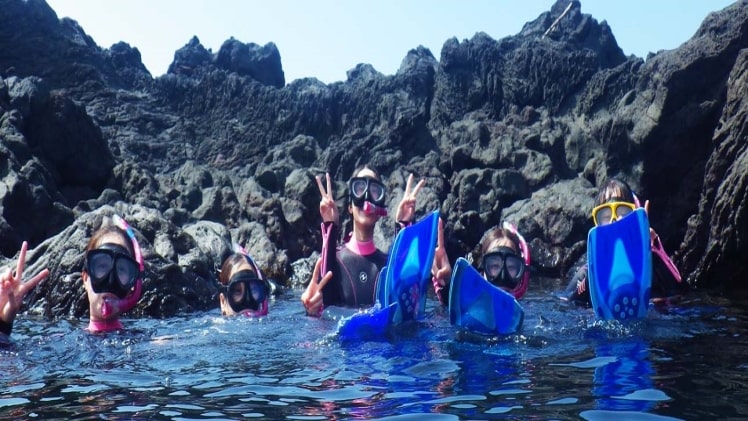Is it true that you’re looking for adventurous water exercises like Surfing in Japan? In Japan, there are many exciting and stimulating water activities to enjoy. This island country offers movement activities because it is surrounded by sea and has 32,000 waterways, streams, and lakes. A few of the more well-known practices are listed below:
Kayaking and paddling:
Paddling and kayaking are two popular water activities among visitors. Every year, many visitors enjoy paddling and kayaking on wild lakes and streams. Because there aren’t as many waterways for kayaking in Japan as there are in the United States, you’ll want to identify the streams before making plans to paddle. If you want to enjoy calm kayaking with your family, Namato and Okutone lakes are the places to go. These lakes are formed by a series of massive dams; the stream appears to be calm and safe for kayaking.
Experienced paddlers can rent pontoons, kayaks, and kayaks to enjoy the sport. Kayaking is usually done on Lake Biwa and Lake Aoki. Choose a location near Hime River if you wish to enjoy challenging and adventurous kayaking. Paddling and kayaking workouts allow you to appreciate Kushiro Shitsugen National Park and Matsushima Bay at their best. The Shizuoka region is a popular destination for ocean kayaking.
For beginners, a kayaking excursion lasts only one day, while expert kayakers can enjoy it for up to two days. Guests can camp on islands during multi-day excursions.
Snorkeling and Plunging:
The southern islands of Okinawa, the Ogasawara Islands, and the Izu Islands are well-known for diving and swimming. Many visitors like diving and swimming on these islands because of the clean water and pleasant climate. Furthermore, while diving and swimming in these obstructions, you can marvel at the beauty of underwater marine life and coral reefs.
Boating in the wilderness:
Tone River is the finest place to go if you want to enjoy nature boating. Boating seasons in the backcountry typically last from April to October, so plan your trip appropriately. If you want a challenging encounter, go in June, when the stream is overflowing with water from the spring melt.
Surfing:
Because the waves are strong in some areas, you’ll want to know where the best surfing spots are Surf Japan.
Fishing:
Fishing is a popular water activity among visitors who appreciate spending time with their loved ones. Bass, salmon, and trout fishing are available in the state’s 32,000 rivers, streams, and lakes. However, due to the development of concrete stream banks and dams, you will likely be unable to enjoy fishing in certain waterways, so choose the finest fishing places before planning your trip.
Put some thought into your surfing.
Okay, so you’re having trouble with a move, so you look up “how to” in a Japanese surf, and there it is…stoked! They break down the procedure into phases for you, such as “squat, contact water, reach out into the lip, snatch, spot the arrival,” and then you’re done. Overall, that’s fantastic; you’re pumped to get it done; you paddle out and try a couple, but no karma. You start to believe it after thinking some negative thoughts about it.”I can’t do airs, reductions, turns, and so on” You’ll keep trying the move again and over, but you’ll always have that confining conviction, and each time you bomb, it will become more grounded. “I’m afraid I won’t be able to do them.
“Simply put, I need to work on my strategy more, practice harder, or separate it once more; nevertheless, if you actually want to see improvement, you must first conquer that negative belief that is preventing you from progressing to the next level.
Because surfing is such a powerful sport, it might be tough to consider a move at different stages of the plan. However, everything works out so quickly in any case, and getting caught up in the process frequently hardens you up and takes the fun out of surfing.
I’m not suggesting that ‘how to’ exhortation is pointless or that you shouldn’t think about the approach in any way; rather, I’ll suggest a couple of interactions that will work on those limiting beliefs and complement the strategy work.
Observing a balance between actual practice and energy work will help you improve your surfing (representation and conviction work). I doubt you’ll see much improvement if you simply sit down and reflect or visualize yourself busting new moves without actually going out there and surfing; similarly, if you simply practice the activity each wave for what feels like an eternity without attending to what antagonism is going through your mind.
Views.
By the same token, such obsession will not produce quick results. This is an all-encompassing strategy; you begin with energy work and work your way to a state where you can surf with conviction, joy, and confidence. You see yourself completing the relocation and create a positive attitude toward it. The energy work prepares you to act; yet, you must practice to meet the learning; this is where the change occurs, in the water. I honestly believe that this will hasten your ability to learn and adapt, allowing you to have far more fun at sea!

